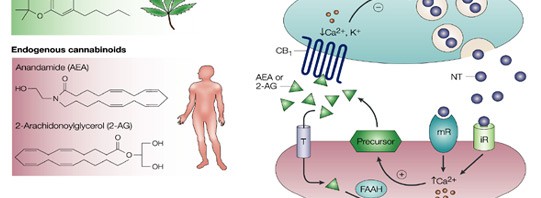So it looks like meth labs are popping up like mushrooms in Kentucky. Yet another illustration of the futility of the hopeless War on Drugs.
I refer you to the sub-chapter of World War-D:
Technological innovations and the next wave of diseases of excess
We have seen that various technological innovations have profoundly altered the psychoactive landscape throughout the ages, often leading to epidemics of “diseases of excess.” The invention of beer and wine played a critical role in the launch and expansion of Western civilization around 6,000 years ago.[1] Industrial-scale distillation produced a wave of alcoholism in the 18th and 19th century in Europe and the US. Advances in chemistry leading to the production of morphine, heroin and cocaine generated a first wave of addiction by the end of the 19th and early 20th century.
Three technological innovations are in the process of dramatically altering the global psychoactive landscape and have the potential to overwhelm the War on Drugs.
The Internet is revolutionizing the way we access and process information, allowing instant and widespread access and dissemination of information on virtually any topic. The Internet also transforms the way people interact. Virtual networks can be easily created, connecting people throughout the world. At the same time, subculture can spread at viral speed throughout the web.
Hydroponics is the second technological innovation drastically affecting the psychoactive landscape, allowing virtually anybody with spare space and an Internet connection to start hydroponic production of marijuana in his or her house, apartment or backyard. He or she can get all the necessary information and supplies from the Internet, including detailed instructions, seeds and clones. Indoor cultivation allows year-round production with three or four crops per year, and a controlled environment yielding consistent results and often higher-quality products commanding a higher price. As marijuana grows wild or semi-wild in most emerging countries, cannabis and its derivatives are now widely available in most parts of the world thanks to indoors or outdoors cultivation.
The proliferation of indoors cultivation is giving rise to cottage industry with lots of independent producers supplying small networks of acquaintances, some of which they may have met through the Internet. Criminal organizations are also getting in the business, setting up large-scale indoors or outdoors production. In the US, outdoors production is often done on remote public land. According to a state report, marijuana is now a $14 billion industry in California, and its number one cash crop. It represents over 50% of the economic activity in Mendocino County.[2]
Thanks again to the Internet, “kitchen counter chemistry” allows anybody with some chemistry background to produce synthetic drugs, ATS (amphetamine-type stimulants), ecstasy/MDMA, and LSD, LSD being admittedly the most difficult to manufacture. Formulas and know-how can be easily downloaded and most supplies can easily be purchased over the Internet. While independent labs are not by any means as widespread as marijuana plantations, their production capacities are much larger and the profit potential is astronomical as costs can be as low as a few pennies per dose, with retail prices ranging from $10-$50 or more. Asian gangs often control the production of synthetic drugs in Asia itself and in Canada, the US and EU through their diaspora. They also control its distribution, mostly through the club scene, especially for MDMA/ecstasy. In the US, biker gangs seem to be involved in ATS production and, to a large extent, control their distribution. Mexican gangs dominate the distribution of Mexican amphetamines. Missouri and Tennessee at the center of America’s heartland lead the pack in meth production in the US, with a whopping 2,082 meth lab busts in 2010 for Tennessee,[3] overtaking Missouri at 1,960. There were over 13,000 meth labs busts in Missouri over the past seven years. Sherriff Tommy Adams from tiny Carter County, MO, in the Ozark Mountain foothills with just 6,000 residents, was busted for meth trafficking in April 2011; his chief deputy was charged with burglary for stealing a gun from the evidence room.[4]
To further compound the problem, new psychoactive substances are continuously popping up like mushrooms. 2010 was a bumper year with over 40 new synthetic drugs appearing in the EU market, pulverizing the 2009 record of 24.[5] Such drugs are marketed over the Internet as legal substitutes for cocaine, heroin, amphetamine or ecstasy until they are banned and promptly replaced by yet newer and largely untested substitutes, spreading at viral speed through social networks and forums.
The synthetic drug market is hard to trace as production takes place near the main markets. Distribution networks are volatile and informal, raves, clubs and the dance scene being the most common marketing venues. Dealers and users are mostly mainstream, average young adults in search of hedonistic satisfaction and glamour with the thrill of forbidden fruit. Organized crime might get more involved in this fast growing market in view of the huge profit potential and greatly diminished risks. In the EU and US, the use of synthetic drugs now surpasses the use of heroin and cocaine combined. It is growing by leaps and bounds in all parts of the world, especially in Asia and the Middle East.
These technical innovations – the Internet, hydroponics, and kitchen counter chemistry – are game changing and have the potential to overwhelm the War on Drugs in developed countries. Many countries have already pretty much given up on trying to control cannabis consumption, but most experts agree that cannabis is a fairly innocuous drug, probably less harmful than alcohol. More worrisome is the spread of production and consumption of synthetic drugs. Amphetamines in particular can be extremely addictive; abuse leads to violent, dangerous, unpredictable, and perturbed behavior. As the entry barrier to production lowers to the point of being virtually nonexistent, and as distribution networks become increasingly informal and diffuse, it is hard to figure out how these trends can be addressed within the current prohibitionist policies, short of adopting even more intrusive law enforcement policies that are increasingly incompatible with democratic societies.
[1] See Chapter 8 – Alcohol.
[2] Matt Baume, “Pot Crushes Wine Vineyards as Cash Crop,” Oct 21 2010.
[3] “Tennessee Overtakes Missouri in Meth Lab Busts,” Associated Press, March 01 2011.
[4] “Sheriff faces meth charge in state ravaged by drug,” Associated Press, April 18 2011.


